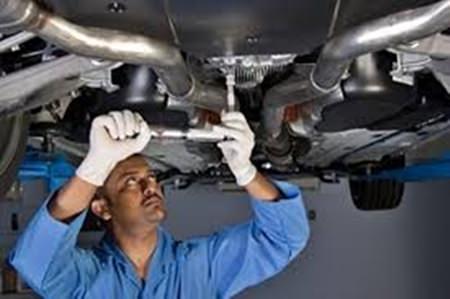
The auto watchdog JD Power finds satisfaction with servicing declines. New vehicle owner satisfaction among those who utilize authorized after-sales service declined in 2017, as service customers increasingly expect more services and better value during service visits, according to the J.D. Power 2017 Thailand Customer Service Index (CSI) Study, released this month.
Overall service satisfaction for mass market brands averages 866 (on a 1,000-point scale), down from 873 in 2016. Although 20 percent of customers say their most recent service experience exceeded their expectations – an increase of 13 percent from 2016 – a similar proportion indicate that their service advisor was neither completely focused on their needs (20 percent) nor provided helpful advice (19 percent). The study finds that implementation of service standards has declined year over year, with fewer dealer staff reportedly taking the time to inspect the vehicle with customers before service (75 percent vs. 87 percent in 2016, respectively) and after service (93 percent vs. 97 percent, respectively).
“Most new-vehicle owners are generally satisfied with after-sales service but would prefer a more attentive service center representative, one who provides valuable advice on optimum and cost-efficient car maintenance,” said Siros Satrabhaya, country manager at J.D. Power. “While core quality standards are quite often met, and servicing time remains stable, dealer personnel need to go the extra mile in order to provide the highest possible customer service. With customers increasingly comparing authorized dealer service standards and value for money with those of non-authorized facilities, such as quick service chains, dealers need to step up and offer more personalized service. Examples would be transport options to and from their facility during service, express service and more flexible service times.”
Competition from non-authorized facilities is increasing, as 9 percent of customers indicate they have used such service centers for their new-vehicle service – up two percentage points from 2016 – and, more specifically, among 14 percent of customers in the Greater Bangkok region (an increase of 10 percent from last year). New-vehicle owners cite convenience and speed of service among the top reasons for visiting non-authorized facilities. Customer satisfaction with these facilities has increased considerably as the proportions of customers who are pleased (satisfaction score of 8 or 9 on a 10 point scale) and delighted (score of 10) has increased this year by 25 percent from 2016 (to 84 percent from 59 percent).
Despite a 7 percent increase year over year in the number of customers who make an appointment prior to their service visit (61 percent vs. 54 percent, respectively), the study finds that quality of interaction over the phone has declined. The time it takes for customers to speak with a service advisor once at the dealership has also increased, in addition to the time taken to complete the entire vehicle handover process – 32 percent said it took more than 10 minutes, compared with 20 percent in 2016.
The study also finds that, while the average service time remains stable with more than two-thirds (67 percent) of service customers’ vehicles (serviced on the same day) ready within two hours, satisfaction levels with service time are lower than in 2016 regardless of the actual time it took to complete the service. In addition, while in 2016 a slight majority (56 percent) said they used a “quick service” facility, only 32 percent in 2017 say the same.
Study Rankings:
Toyota ranks highest for a fourth consecutive year in overall customer service satisfaction among mass market brands, with a score of 879. Toyota outperforms competitor brands across all five CSI factors. All brands except Suzuki and Chevrolet have lower satisfaction levels in 2017 compared with 2016. Honda ranks second with a score of 864 and Mitsubishi ranks third with 863.
About the Study
The study, now in its 18th year, measures new-vehicle owner satisfaction with the after-sales service process at an authorized service center by examining dealership performance in five factors (in order of importance): service quality (29 percent); service initiation (26 percent); vehicle pickup (18 percent); service advisor (15 percent); and service facility (12 percent).
The 2017 Thailand Customer Service Index (CSI) Study is based on responses from 2,770 new vehicle owners who purchased their vehicle between January 2015 and May 2016 and took their vehicle for service to an authorized dealer or service center between July 2016 and May 2017. The study was fielded from January through May 2017.
The ‘take home’ message from the JD Power study is a report card saying “must try harder”. Shiny new premises may attract initially, but if the customer is not happy with the service there are many non-brand chains of quick service centers ready to look after your vehicle.




